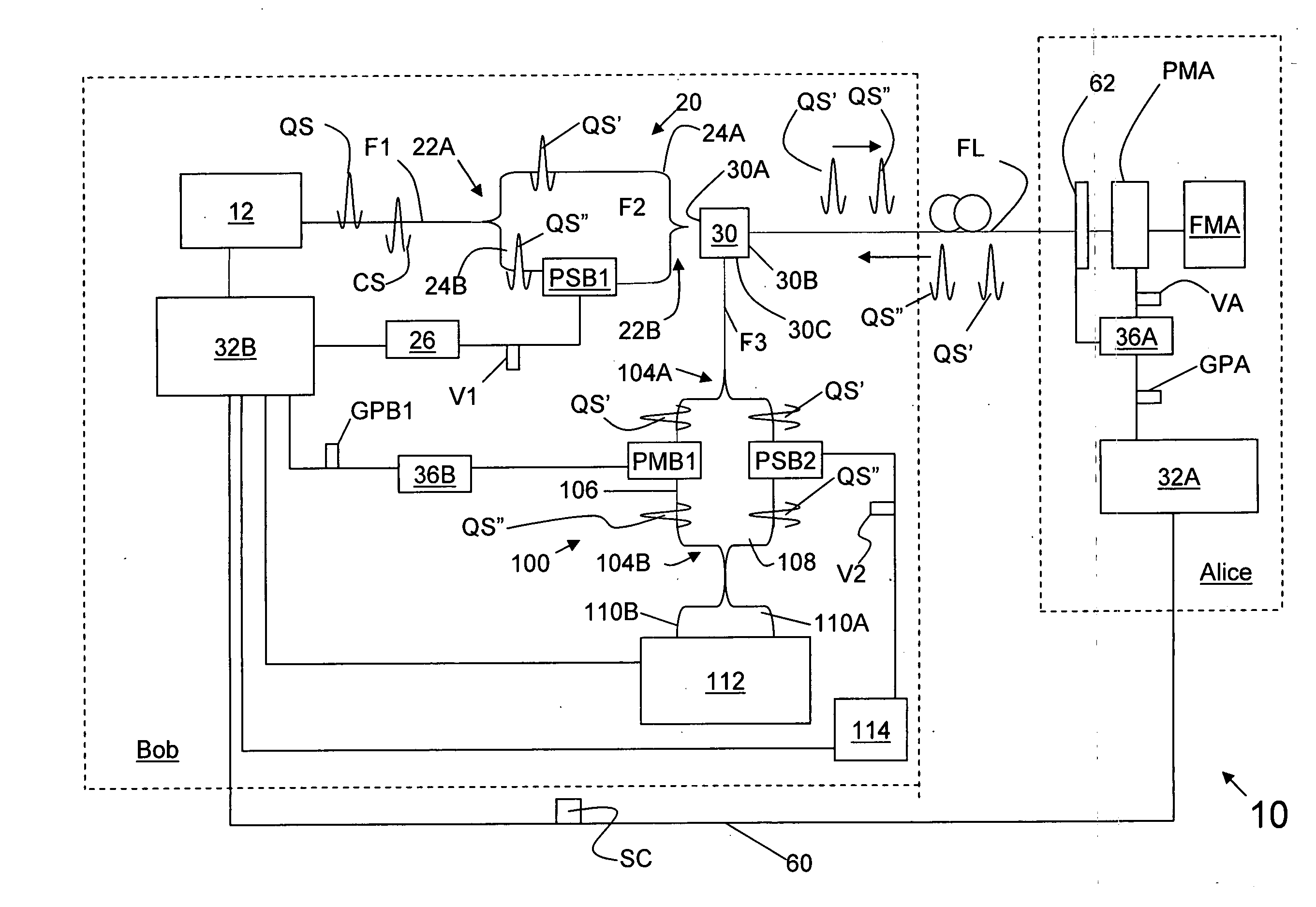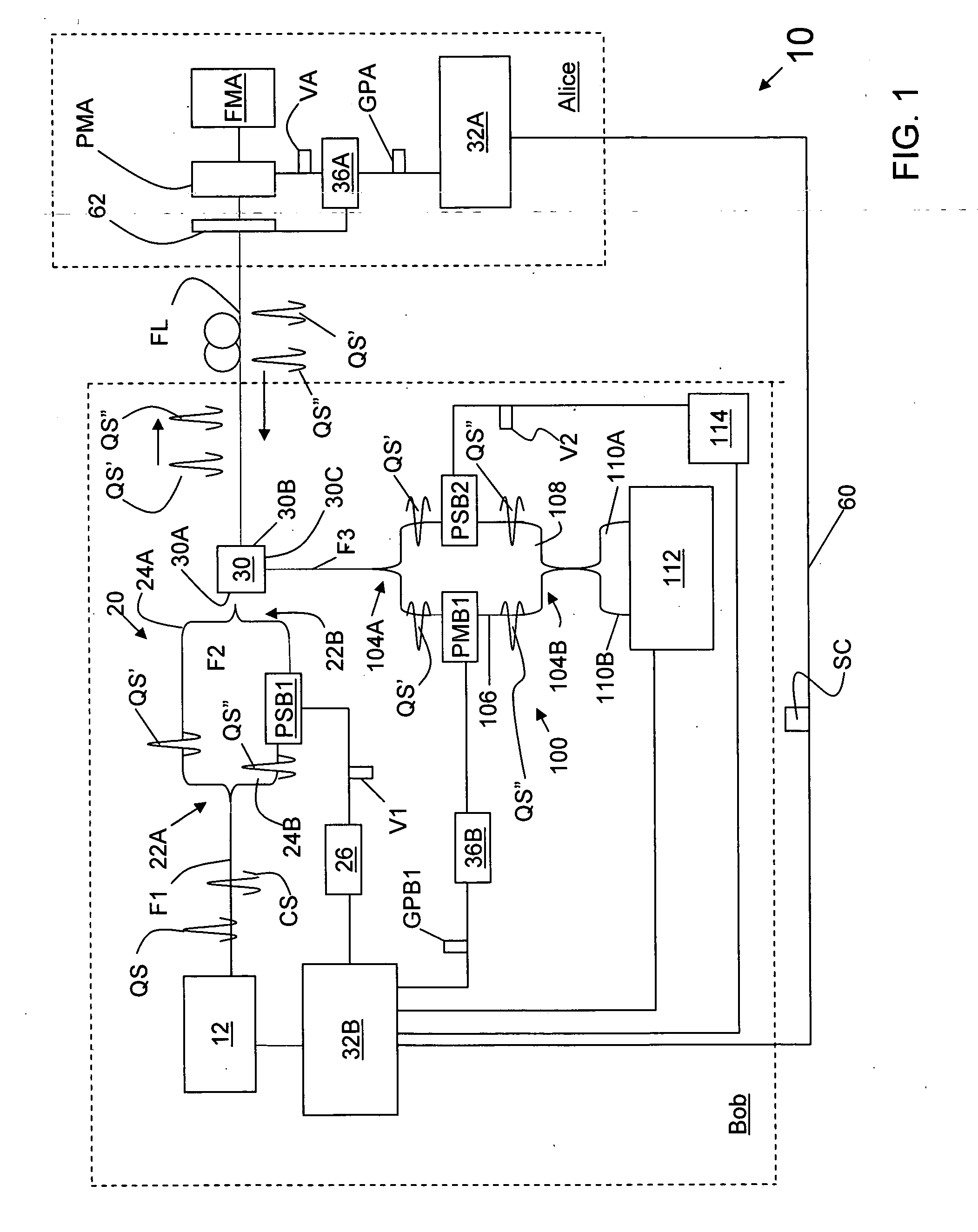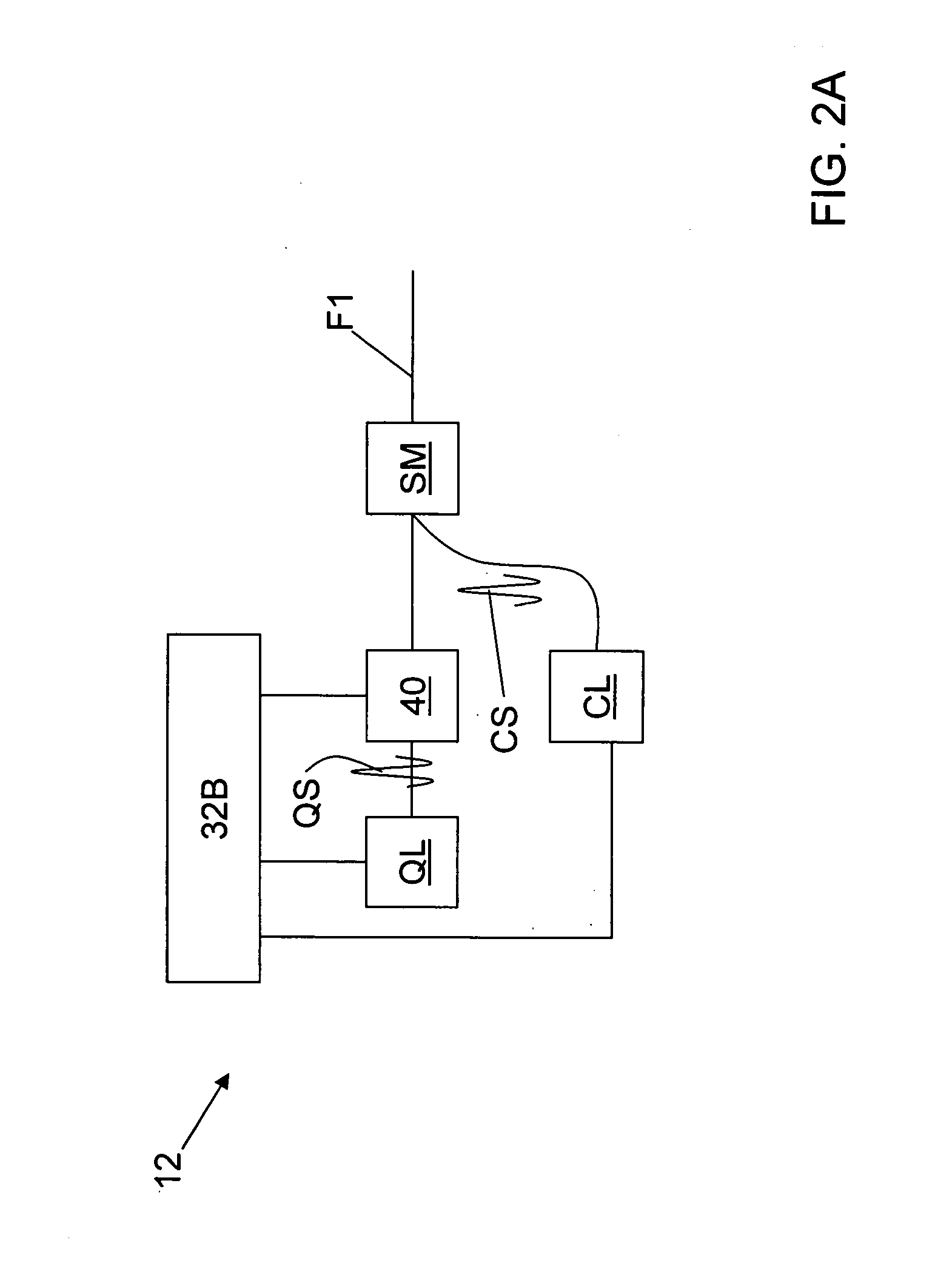Two-way QKD system with active compensation
a two-way qkd and active compensation technology, applied in the field of quantum cryptography, can solve the problems of time variance of quantum signal polarization, difficult modulation of signal and keeping interferometer balanced, and add complexity and expense to the system
- Summary
- Abstract
- Description
- Claims
- Application Information
AI Technical Summary
Benefits of technology
Problems solved by technology
Method used
Image
Examples
Embodiment Construction
[0027] The present invention relates to quantum cryptography, and in particular relates to a stabilized two-way quantum key exchange (QKD) system. The present invention includes a two-way QKD system that is actively stabilized. The design of the system allows for a higher bit rate than that possible with prior art two-way systems that rely on autocompensation by having signals traverse identical paths. Several different embodiments of the invention are described below. A so-called “two-loop” embodiment is first described, and then the other embodiments are described in relation to the two-loop embodiment.
[0028] In the description below, “loop” is sometimes used as shorthand for “interferometer.” Also, the phrase “quantum signals” is used to denote those signals (optical pulses) associated with a quantum channel and that are used to establish a quantum key. Initially, the quantum signals leaving Bob need not be “quantum signals” in the literal sense, i.e., they need not have a photo...
PUM
 Login to View More
Login to View More Abstract
Description
Claims
Application Information
 Login to View More
Login to View More - R&D
- Intellectual Property
- Life Sciences
- Materials
- Tech Scout
- Unparalleled Data Quality
- Higher Quality Content
- 60% Fewer Hallucinations
Browse by: Latest US Patents, China's latest patents, Technical Efficacy Thesaurus, Application Domain, Technology Topic, Popular Technical Reports.
© 2025 PatSnap. All rights reserved.Legal|Privacy policy|Modern Slavery Act Transparency Statement|Sitemap|About US| Contact US: help@patsnap.com



